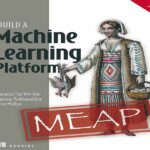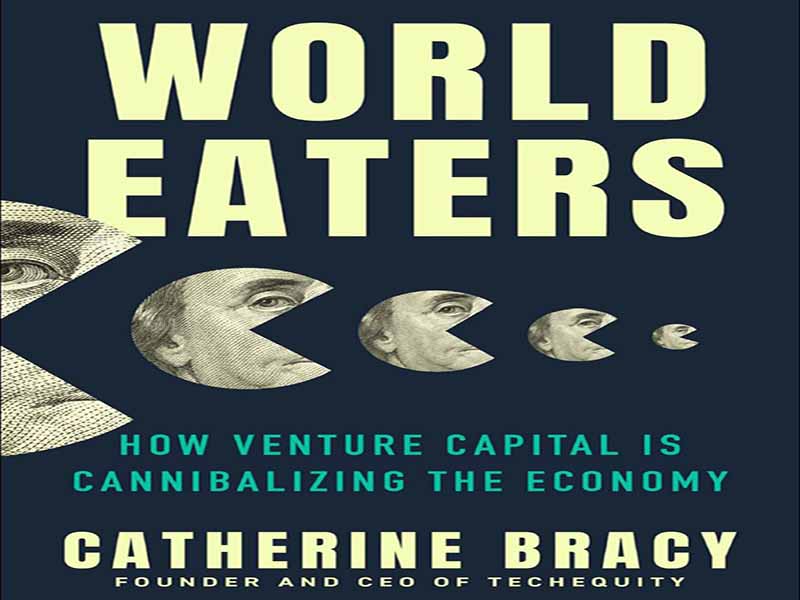- عنوان کتاب: World Eaters – How Venture Capital is Cannibalizing the Economy
- نویسنده: Catherine Bracy
- حوزه: سرمایه خطرپذیر
- سال انتشار: 2025
- تعداد صفحه: 293
- زبان اصلی: انگلیسی
- نوع فایل: pdf
- حجم فایل: 3.96 مگابایت
تصور زمان و مکانی که در آن واحد نسبت به سانفرانسیسکو در نیمه اول دهه 2010 خوش بینانه تر و بدبینانه تر باشد، سخت است. این اوج دومین رونق فناوری بود و منطقه خلیج در مقادیر ناپسند پول شنا می کرد. بین آنها، گوگل، فیسبوک و اپل تقریباً یک تریلیون و نیم دلار ارزش داشتند. نسلی از شرکتهای جدیدتر مانند Uber و Airbnb که از خاکستر رکود اقتصادی بزرگ به وجود آمدند، موج دوم غولهای فناوری را رهبری کردند که به جای پارکهای اداری حومهای دره سیلیکون، خانه خود را در سانفرانسیسکو ساختند. هم Uber و هم Airbnb و بعداً Lyft، عزیزان «اقتصاد اشتراکگذاری» آن دوره بودند، اصطلاحی که با نگاهی به گذشته اکنون اورولی به نظر میرسد، اما در آن زمان به معنای احتمال سادهلوحانهای بود که بسیاری از ما مشتاق استفاده از آن بودیم. درست در همین لحظه به سانفرانسیسکو رسیدم، از ستاد انتخاباتی باراک اوباما در شیکاگو، جایی که به عنوان مدیر محصول در تیم فناوری کمپین کار میکردم، اعزام شدم تا یک «دفتر حوزه فناوری» جدید باز کنم. دفتر حوزه فناوری به عنوان توسعه عملیات فناوری جاه طلبانه و مبتکرانه ای عمل می کند که کمپین در شیکاگو در حال راه اندازی بود. رهبری کمپین که از وجود مهندسان و توسعهدهندگان باتجربه ناامید بود، اما نمیتوانست تعداد کافی از آنها را به شیکاگو جذب کند، مرا به کالیفرنیا فرستاد تا کاری را که سازماندهندگان انجام میدهند انجام دهم: با افراد ما در جایی که هستند ملاقات کنم. اگر آنها پیش ما نمی آمدند، ما پیش آنها می رفتیم. بودن در منطقه خلیج در آن زمان بسیار هیجان انگیز بود. ما دقیقاً در میانه دوران “بله ما می توانیم” بودیم. رکود بزرگ در حال پایان یافتن بود، یک بازار صعودی بیسابقه در حال شتاب بود، و صنعت فناوری در نهایت به نظر میرسید که جامعهای را که پیشگامان تکنو اتوپیایی اینترنت وعده داده بودند، به ارمغان میآورد. با این حال، در اواسط دهه، شکوفه ها از گل رز بیرون می آمدند. پنج سال کامل پس از عمیقترین نقطه بحران اقتصادی، واضح بود که ثروتی که در اثر احیای پررونق ایجاد میشود، بیشتر در اوج جمع میشود، زیرا نابرابری به سطوح بیسابقهای رسیده است. در منطقه خلیج، حس داشتن در مقابل نداشتن به طور خاص شدید بود، و فناوری بیشترین تقصیر را بر دوش داشت. هزینه های زندگی سر به فلک کشیده بود. اجاره در منطقه خلیج در دهه 2010 50 درصد رشد کرد که بالاتر از هر مترو بزرگ دیگری در کشور بود. و نمونههای برجستهای از کارگران و کارآفرینان فناوری وجود داشت که کارهای بیحساسانه و بیحساسانه انجام میدادند و میگفتند، از جمله یک حادثه معروف که یک بنیانگذار فناوری از کسانی که در خیابانهای سانفرانسیسکو زندگی میکردند به عنوان «کفتار» یاد کرد. رفتاری مانند این، این تصور را برای دیگران تقویت کرد که جامعه فناوری – شرکتها و کارگران به طور یکسان – فقط برای خودشان هستند. بعد اتوبوس ها آمدند. بهبود اقتصادی در اوایل دهه 2010 با رونق شهرها همزمان شد. هزارههای تحصیلکرده دانشگاهی که در اقتصاد اطلاعات کار میکردند، به قول ریچارد فلوریدا «طبقه خلاق»، علیه حومهها روی آورده بودند و به دنبال غنای فرهنگی و تراکم شهری بودند. این بدان معناست که بسیاری از بیست و چند سالههایی که برای کار در شرکتهای فناوری به خلیج هجوم میآورند، در سانفرانسیسکو ریشه دارند. حمل و نقل عمومی همان چیزی است که در کالیفرنیای ماشین محور وجود دارد، کارفرمایان این موج جدید کارگران ساکن شهری فاقد یک راه قابل اعتماد برای رساندن آنها به پردیس های شرکتی حومه شهر در دره سیلیکون بودند.
I t’s hard to imagine a time and place that felt more optimistic and dystopian at once than San Francisco in the first half of the 2010s. It was the apex of the second tech boom, and the Bay Area was swimming in obscene amounts of money. Between them, Google, Facebook, and Apple were worth almost a trillion and a half dollars. A generation of newer companies like Uber and Airbnb, born out of the ashes of the Great Recession, were leading a second wave of tech behemoths that made their home in San Francisco rather than in the suburban office parks of Silicon Valley. Both Uber and Airbnb, and later Lyft, were the darlings of the era’s “sharing economy,” a term that with hindsight now sounds Orwellian but at the time spoke to the sense of naive possibility that many of us were eager to indulge. I arrived in San Francisco right at this moment, dispatched from President Barack Obama’s reelection campaign headquarters in Chicago, where I was working as a product manager on the campaign’s technology team, to open a novel “technology field office.” The tech field office would serve as an extension of the ambitious and innovative tech operation the campaign was spinning up in Chicago. Desperate for seasoned engineers and developers but unable to attract enough of them to Chicago, the campaign’s leadership sent me to California to do what organizers do: meet our people where they are. If they wouldn’t come to us, we would go to them. Being in the Bay Area around that time was exhilarating. We were squarely in the middle of the “yes we can” era. The Great Recession was ending, an unprecedented bull market was accelerating, and the tech industry finally seemed like it was going to deliver the society that the internet’s techno utopian pioneers had promised. By the middle of the decade, though, the bloom was coming off the rose. Five full years from the deepest point of the economic crisis, it was clear that the wealth being created by the booming recovery was accruing mostly at the top as inequality hit unprecedented levels. In the Bay Area the sense of haves versus have-nots was particularly stark, and tech bore the brunt of the blame. The cost of living was skyrocketing. Rents in the Bay Area grew by 50 percent in the 2010s, higher than in any other major metro in the country. And there were high-profile instances of tech workers and entrepreneurs doing and saying boneheaded, insensitive things, including one famous incident when a tech founder referred to those living on San Francisco’s streets as “hyenas.” Behavior like this cemented the impression for everyone else that the tech community—the companies and workers alike—were only in it for themselves. Then came the buses. The economic recovery of the early 2010s coincided with the boom of cities. College-educated millennials who worked in the information economy, the “creative class” as Richard Florida termed them, had turned against suburbs and were seeking out the cultural richness and density that city living afforded. This meant that many of the twentysomethings flocking to the Bay to work at tech companies were putting down roots in San Francisco. Public transportation being what it is in car-centric California, the employers of this new wave of city-living workers lacked a reliable way to get them to the suburban corporate campuses in Silicon Valley.
این کتاب را میتوانید از لینک زیر بصورت رایگان دانلود کنید:
Download: World Eaters – How Venture Capital is Cannibalizing the Economy



































نظرات کاربران